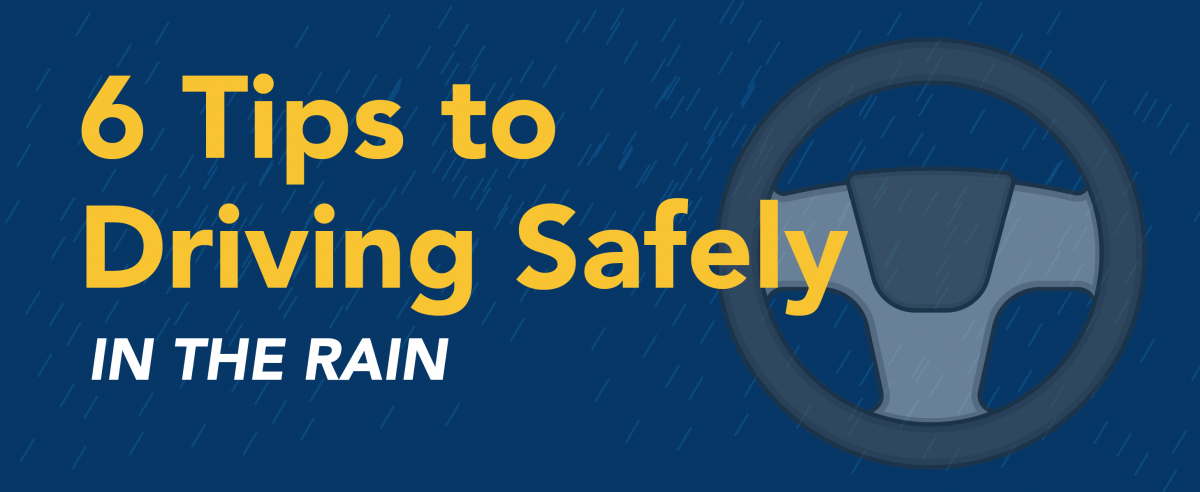As a driver, you must be sensitive to weather conditions. It’s that simple. When confronted with adverse weather and your trip is not absolutely necessary, the safest choice you can make may be to cancel or delay your trip until conditions improve. When you must drive in less than ideal weather conditions, there are a number of appropriate actions you should know how to execute. After all, the goal is to safely arrive at your destination.
Heavy rain is one of the most common adverse weather conditions that drivers face. From torrential downpours that result in flooded streets or heavy rain that blocks visibility, here are a few safety tips for driving in the rain.
How to Drive Safely In the Rain
- Turn on your low beams and windshield wipers.
Activating your low beams and wipers will ensure other vehicles can see you. The state of Illinois requires windshield wipers to be on when low beams are also on. Obey the law to not only ensure your safety but to avoid a legal hassle. - Increase your following distance.
Wet roads are slick surfaces that require special attention when driving on them. When the road is wet, it will take your vehicle a little bit more time to come to a complete stop. Practice safe driving by putting more distance between you and the vehicle in front of you. The average reaction time for drivers is 3⁄4 of a second. Allow yourself enough time to identify the hazard and a plan of avoidance. - Reduce your speed.
Speed limits are set for ideal weather conditions, not wet and slippery roadways. Speeding and over-confidence in adverse conditions can lead to hydroplaning. - Brake smoothly.
You should never slam on the brakes, but this is especially true when driving on wet roads. Apply pressure to the brake slowly, smoothy and early. Try to avoid changing lanes abruptly. - Avoid standing water.
Sounds pretty easy, right? Well, at night this can prove to be a bit more challenging to spot clearly. A general rule of thumb is to scan ahead and anticipate where water might be accumulating. Does water appear to be in one lane more so than the other? Is water welling up on the shoulder of the road? - Exercise extra caution at intersections.
Slow well before intersections by covering the brake. Even with good visibility and in the best of conditions, intersections are a high-risk area for collisions. Remember to anticipate never assume another drivers actions. Drivers may not come to a complete stop and blow through an intersection especially in slippery conditions if they have not been properly trained to drive in adverse conditions.
What Is Hydroplaning?
Hydroplaning refers to a film of water that forms between the roadway and your tires, actually lifting the front wheels off the pavement and adversely affecting your ability to steer and brake. Although there are many variables that determine whether or not your vehicle will hydroplane, vehicles can hydroplane at even low speeds.
Always Account for the Type of Vehicle You’re Driving
Think about it. The type of vehicle you are driving does affect the way you address adverse conditions. Which wheels are the “drive” wheels? Is your vehicle rear-wheel drive or front-wheel drive? All-wheel or four-wheel drive? Each has slightly different driving characteristics and you should remind yourself of these factors before embarking on your journey.
Interested in taking an adverse weather course with Top Driver? Click here to register! This refresher course is only $15, online and self-paced. You’ll learn about driving safety considerations in adverse weather, the importance of traction and weight shift in poor conditions, driving in rain, and driving in winter conditions.
